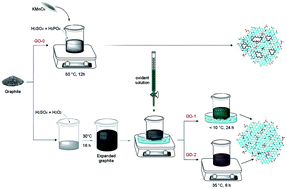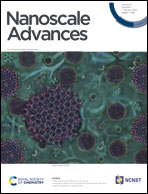Enhanced synthesis method of graphene oxide†
Abstract
The synthesis of high quality graphene oxide (GO) in large quantities is a matter of great importance for both research institutes and industries. In the present study, we report an improvement in the so-called “improved method” reported by Tour et al., which had already improved the very famous “Hummers method” to a certain extent. Through an important pre-treatment step, GO with larger sheets, better structural integrity, and a higher yield of monolayers was obtained. Furthermore, both the oxidation time and temperature were reduced without reducing the degree of high oxidation. Even though a low temperature is known to be a prerequisite for obtaining less defective GO in its reduced form (rGO), we found through this research that the pre-treatment step minimizes the negative effect of the moderate temperature (35 °C) needed to enhance the reaction rate, without altering the basal graphitic plane, which was also preserved at a low temperature (<10 °C). Both the mechanical and electrical properties confirm the enhancement of the GO quality obtained through improving the improved method, and make the rGO films produced attractive for practical applications.



 Please wait while we load your content...
Please wait while we load your content...